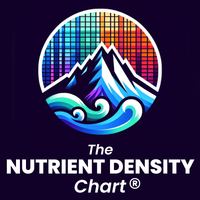State law allows the provision of nutritional advice but does not authorize the diagnosis, prevention, or treatment of medical conditions. Consult a licensed health practitioner for medical advice. As required by California BPC § 2068.
Our Summit Tracker Products specialize in making nutrition easy and accessible. We've transformed the challenge of eating a spectrum of nutrient-dense foods into a straightforward process. By abstracting the complexities of essential nutrient tracking, our tools do the hard work for you. These products are designed for simplicity and ease, offering a clear, direct path to optimal nutrition, fitness, and recovery.
Weekly Tracker (Dry-Erase Chart)
$100.00
Unit price
Weekly Tracker (Digital Chart)
$50.00
Unit price
Weekly Tracker (Mobile eBook)
$50.00
Unit price
Yearly Journal (Printed Book)
$150.00
Unit price
Weekly Tracker (Dry-Erase Chart)
$100.00
Unit price
Weekly Tracker (Digital Chart)
$50.00
Unit price
Weekly Tracker (Mobile eBook)
$50.00
Unit price
Yearly Journal (Printed Book)
$150.00
Unit price
Our Weekly Tracker Gives You:
- Weekly Tracker for nutrition, fitness, and wellness activities
- Tracks progress week to week from Rookie to Olympian
- Includes 20 sophisticated food groups to optimize nutrient intake
- Features 190 refined foods carefully selected for their nutrient density
- Food preparation and sourcing information to maximize bioavailability
- Streamlines tracking of daily nutrients
- Focuses exclusively on real foods and real nutrients
- User-friendly interface for ease of daily use
CODE SCIENCE 10% OFF
Our Deep Dive Products are based on meticulously sourced nutrition data from credible international food composition databases and reputable peer-reviewed scientific journals. Our approach involves extensive research, gathering, sorting, cleansing, collating, curating, analyzing, and synthesizing this detailed and complex information into the most optimized format achievable with easily understandable infographics and nutrient density scores, all presented with exceptional design quality. This methodology ensures that our products stand as an invaluable resource for those seeking a deeper understanding of nutrition.
The Nutrient Density Chart® (Wall Chart)
$100.00
Unit price
The Nutrient Density Chart® (Digital Chart)
$50.00
Unit price
The Nutrient Density Chart® (Mobile eBook)
$50.00
Unit price

The Nutrient Density Chart® (Softcover Book)
$100.00
Unit price
The Nutrient Density Chart® (Hardcover Book)
$150.00
Unit price
The Nutrient Density Chart® (Wall Chart)
$100.00
Unit price
The Nutrient Density Chart® (Digital Chart)
$50.00
Unit price
The Nutrient Density Chart® (Mobile eBook)
$50.00
Unit price
The Nutrient Density Chart® (Softcover Book)
$100.00
Unit price
The Nutrient Density Chart® (Hardcover Book)
$150.00
Unit price
The Nutrient Density Chart® Gives You:
- Nutrition map of 50 essential nutrients
- 1,500+ Nutrient Density Power Score™ data points
- Rankings of nutrient-dense food sources per nutrient
- Top 100 overall most nutrient-dense foods list
- Tool for identifying dietary gaps
- Enables personalized diet and meal planning
- Alternative to Food Pyramid/MyPlate
- Focus on real, natural nutrients; no synthetic nutrients
Our Digital Media Channels provide an insightful exploration of The Nutrient Density Chart®, combining science, culinary skills, and creativity in compelling content. We highlight the realm of nutrient-dense foods, enhancing knowledge and engagement, and encouraging audiences to discover and learn.

Jordan Science Lab
@JordanScienceLab
Explore SCIENCE and The Nutrient Density Chart® with emmy-winner Jordan Wiberg!

The Cookbook Tour
@TheCookbookTour
Cooking show for The Nutrient Density Chart®

The Giant Guava
@TheGiantGuava
Extraterrestrial Guava teaching the world about The Nutrient Density Chart®

TNDC Gameshow
@TNDCgameshow
Engaging the public about The Nutrient Density Chart®
Answers to Common Questions
How do you define the concept of nutrient density?
What are nutrient dense foods?
How many different nutrients does the human body require?
What is the difference between essential and conditionally essential nutrients?
Why does bioavailability matter in the context of nutrition from real foods?
How do you account for the bioavailability of nutrients in real foods?
What sources does your product reference for its data?
What is the difference between natural nutrients and synthetic nutrients?
How do I use your products?
What People Are Saying
Compare Products
| Price |
|---|
| SKU |
| Rating |
| Discount |
| Vendor |
| Tags |
| Weight |
| Stock |
| Short Description |
Compare Products
Need help
- Heading
- Heading
Description here













